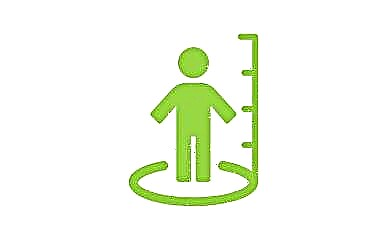
The problem of autism in young children is one of the most difficult problems in children's practice. Currently, in Russia, various diagnostic tests are practically not used, which would make it possible to clarify the diagnosis until the child is three years old. Nevertheless, every year, cases of newly diagnosed disease are recorded in preschool children. All parents should know about this disease in order to recognize the disease in time.

Characteristic
For the first time, a case of autism in children was described in 1943. This discovery was made by G. Asperger. Subsequently, even one of the syndromes in which the symptoms of the disease develop was named after him - Asperger's syndrome. The definition of the disease was given much later, after the accumulation of statistical data on the sick.
Autism is a mental illness in which severe disorders occur in the cerebral cortex, leading to a complete violation of social adaptation and a special perception of one's own inner world.
The disease can occur at any age, including newborns. Children diagnosed with autism require a more attentive attitude and a special approach.

Causes
Today, most scientists believe that the cause of the disease is a violation in the genetic apparatus or congenital genetic inheritance. Very often, the first signs of the disease can be seen in infants or babies in the first year of life. However, these manifestations are often attributed to a feature of the child's character or temperament.
Autism is much more common in boys. The ratio is 4: 1. Girls get sick less often. Often, babies have a high predisposition to the disease if their close relatives or parents have this disease.

The disease is inherited in an autosomal recessive manner. This means that even if both parents have autism, their risk of having a healthy child is 25%.
Not only hereditary predisposition can lead to the appearance of the disease. There are scientific studies that have shown a relationship between the impact of some provoking factors on the development of the disease. As a rule, this action occurs during the intrauterine growth of the baby.
Such provoking factors include:
Infection of a pregnant woman various bacterial or viral infections. Such infection of the fetus is especially dangerous during the first 8 weeks of intrauterine development.
Exposure to the unborn child of various toxic chemicals. This usually happens if mommy works in hazardous industries or industrial plants during pregnancy.
Strong ionizing radiation. It is found in various industries where work is carried out with ultrasound or infrared rays. All types of radioactive radiation can also affect the structure of the nervous system and cause symptoms of autism.

Classification
Early childhood autism can take many forms. Usually, doctors use different classifications that allow you to divide the forms of the disease according to similar characteristics.
The disease can be mild, moderate, or severe. This classification is based on the severity of adverse symptoms.
- With mild severity impairment of intellectual abilities in the baby does not occur. Such children practically do not lag behind in the level of mental development of their peers. With close observation of the child, you can find some features. As a rule, this form of the disease is diagnosed at 3 years of age.
- For moderate autism already more persistent violations of motor functions appear, and speech disorders are also added. Children in 2 years practically do not speak. Some kids can pronounce only individual words or phrases, but speech turns are meaningless and are only a simple set of syllables.
- For heavy current marked disorders of cerebral activity are characteristic. Children practically do not react to those around them, do not answer the questions addressed to them. Babies at the age of 1.5 years in development correspond to a 6-7 month old baby. This form of the disease is characterized by an unfavorable course and a relatively poor prognosis of treatment.

Signs of autism
The main manifestations of the disease include the following symptoms:
Depletion of emotions. Babies who do not have abnormalities in mental development experience positive emotions with any smile or stroke and react in response. Children with autism barely respond. Physical or bodily contact does not elicit any response from them. The child remains indifferent or tries to turn away.
Focused gaze. Usually babies in the first year of life begin to fix their gaze on one object. Most often, children with autism have a “missing” look. They never look the other person in the eye, but for hours they can look at some part of the toy or a drawing on the wall. It often seems that the baby is simply immersed in himself.
Slow potty training. Usually for toddlers with autism, this becomes a very difficult task. Often only at the age of 3-4 years the child completely weaned from diapers and gets used to going to the potty.
Speech disorders. Typically, autistic toddlers start talking late. Even after pronouncing the first words, they can become silent for a long time. After a few months, they begin to speak again, but they only pronounce a few separate syllables or words of the same type.
Multiple repetitions of words. Kids with autism often repeat a few words. To the question "will you eat?" they can repeat "eat, eat, eat" several dozen times. It will stop only when one of the parents says "eat" after the child's monologue. After that, he usually falls silent.
Similar movements. Austrian babies really enjoy repeating an action many times. They usually turn on and off the light or turn on the water tap. Any attempts to make a comment that doing this is wrong or wrong, the child does not perceive adequately and begins to repeat over and over again.
Change in gait. Quite often, a small autistic person begins to walk on tiptoe or swing his arms strongly when walking, as if depicting a bird or a butterfly. Some toddlers may bounce when they walk.
Psychological features. Usually, a toddler with autism becomes more withdrawn. These children often have great difficulty trying to make new friends. Toddlers usually do not play with other children in the sandbox or leave the playground, avoiding new acquaintances.
Favorite food. Typically, a child with autism has a pronounced inclination and love only for certain foods. Introducing new foods into his diet becomes an overly difficult task for any mom. The kid categorically refuses everything new, demanding dishes familiar to him. Children aged 2-3 years eat only from dishes familiar to them. New cutlery can give your toddler a real panic attack.
Strict organization. Children with autism always try to organize their toys or objects. They arrange their dolls or animals according to color, size, or according to some criteria only they understand. Any violation of this order can cause severe apathy in the baby or, on the contrary, lead to aggressive behavior.
The possibility of self-aggression. In children with autism, the boundaries of perception of the external and internal world are violated. Quite often, they are overly painful about any attempts to invade their personal world. In this case, they show aggression not towards another person, but towards themselves. Babies can bite themselves on purpose and even try to fall out of the crib or playpen. It should be noted that such symptoms are found mainly in rather severe forms of the disease.

Diagnostics
Defining autism is a difficult task not only for parents, but even for an experienced doctor. Home testing does not always provide an accurate verdict on whether a child has an illness. This study is only of an auxiliary nature. If the parents notice that the child has certain behavioral features, then they should definitely show him to the doctor.
In order to successfully diagnose the disease, several tests are required.
Usually the diagnosis of autism is made collectively. For this, a commission of several specialists with sufficient knowledge of working with such children is being created. It includes: a psychotherapist, a medical psychologist, a speech therapist and a rehabilitation therapist.
Basic approaches to correction
To date, no specific treatment for the disease has been developed. The genetic predisposition of the disease makes it impossible to create one unique pill that would lead to a complete recovery.
Treatment for autism is comprehensive. Prescribing drugs is used only to eliminate the adverse manifestations of the disease that do not lend themselves to psychological influence through the use of other methods of treatment. Usually all medications are prescribed by a psychiatrist. These drugs are serious enough and are only prescribed for a short period of time to relieve acute negative symptoms.
Children psychologists are obliged to work with children diagnosed with autism. The purpose of these sessions is to improve the child's social adaptation using various psychological techniques.

A psychologist in a playful way simulates various life situations that can cause psychological trauma to the child or worsen his condition. During such games, the baby learns to respond correctly to any difficulties and easily builds interpersonal contacts with other people.
Visit a speech therapist is also one of the important stages of treatment. In order to restore the child's speech, regular sessions with a specialist are required. During such training, kids noticeably expand their vocabulary and pronounce the same type of sentences less. Also, such activities significantly improve the process of social adaptation of the child. Kids are less afraid to talk to strangers and make contact faster.
In order for the little autistic to practically not feel his illness, various methods of restorative and entertaining activities are used. Hippotherapy or dolphin therapy is recommended for young autistic people. Kids willingly spend time with animals. Such classes have a beneficial effect on the child's nervous system and have a positive effect on the entire process of treatment and rehabilitation in general.

Determining the disease at an early age is a very difficult task, but necessary. The sooner the diagnosis is made and the sooner rehabilitation measures are started, the more chances for a better adaptation to environmental conditions in a child with autism are.
Such children require a more attentive and thorough approach. Only a competent attitude on the part of others and the closest people allows kids to better adapt to life and achieve success.
In the next video, Yana Summ - the ex-wife of Konstantin Meladze - on my own experience talks about what symptoms the child needs to pay attention to.
You can learn even more about early autism by watching the following video.



